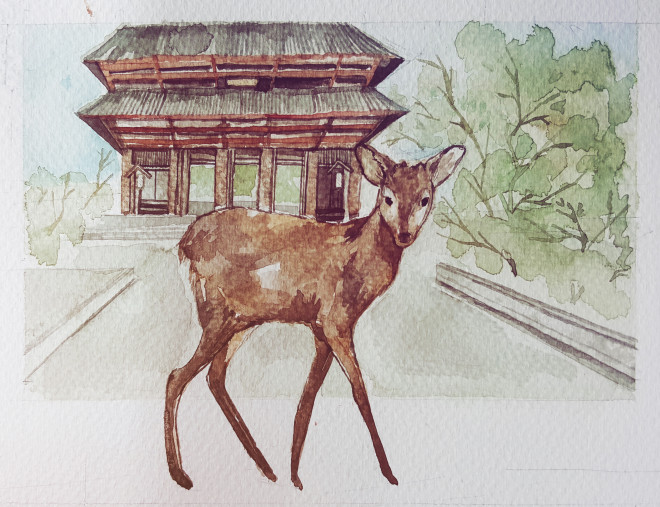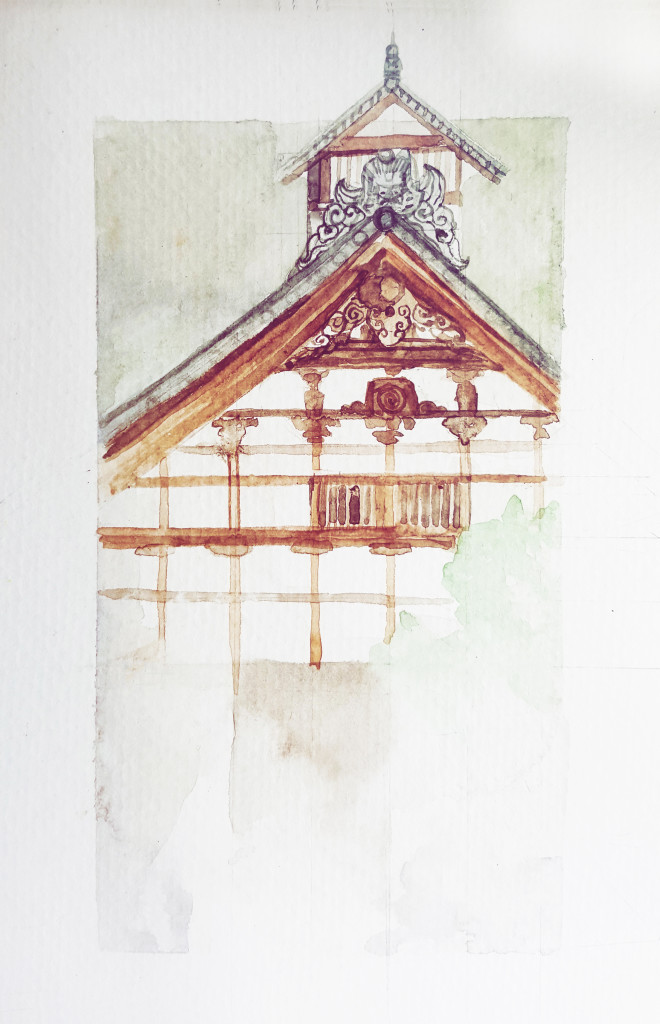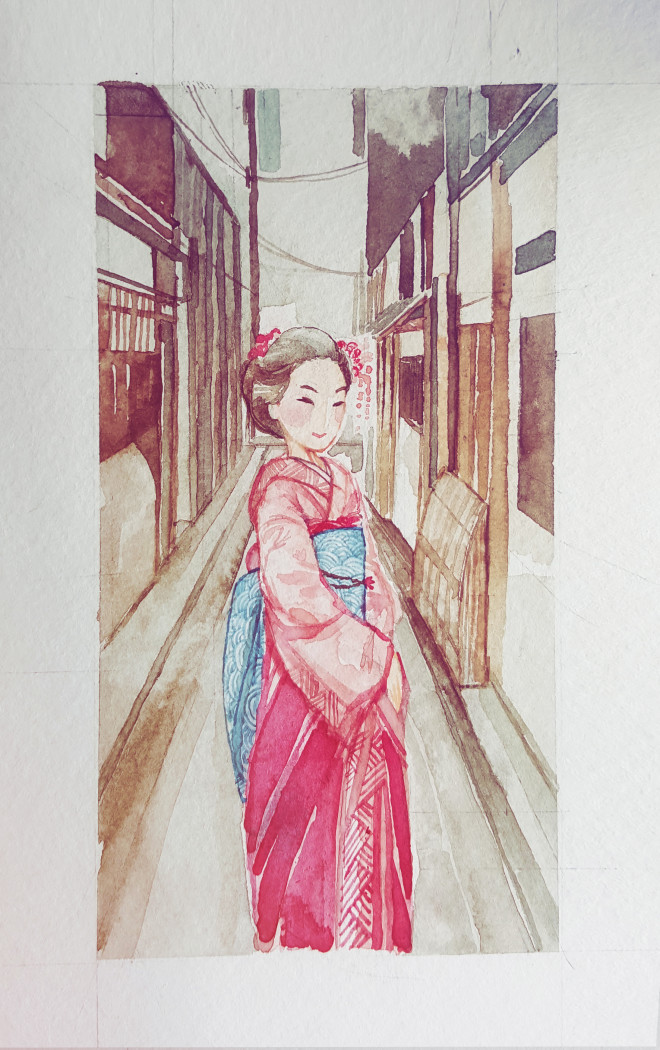Anime, high technology and sushi aside, Japan is a country with a rich history and culture.
These days, Japan is said to be the new Hong Kong, a hot tourist destination. Frequent travelers might be familiar with Tokyo and Osaka for shopping, and Niseko for skiing. But what about sightseeing?
My family and I became the ultimate tourists, trading the shopping malls and famous restaurants for Japan’s finest landmarks.
Nara
Fun fact: Nara was Japan’s first permanent capital.

ILLUSTRATIONS BY KAR VICTORIANO
Leading up to Todai-ji Temple is Nara Park. It is best known for its deer, once revered as a sacred animal. Until 1637, eating or harming a deer was punishable by death.
Our tour guide was right when she said the deer are friendly—a bit too friendly, in fact. Buy a pack of biscuits at any stall for 150 yen. Hold one biscuit up and watch a whole bunch of deer surround you. They also love eating paper, so hide your cash!
Todai-ji Temple
Before entering a temple, Japanese Buddhists observe a ritual that consists of washing their hands and mouth. The Todai-ji Temple is not only the largest wooden structure in the world, it’s also home to massive Buddha statues.
The Daibutsu statue, made of bronze, stands 15 meters tall. One of its hair buns is larger than a human head. Its hand gesture symbolizes the saying, “Don’t, worry, don’t worry, I will answer all of your wishes.” People come here to pay their respects, atone for their wrongdoing and, most importantly, to pray.
Kasuga Grand Shrine
We didn’t have time to reach the Kasuga Grand Shrine itself, though we saw the pathway that led to it—3,000 stone lanterns lit only during festivals in February and August.
Kyoto
Fun fact: Since Kyoto is Japan’s historic capital, it observes restrictions in color. Buildings must only be in brown or beige.
Tenryu-ji Temple

Tenryu-ji Temple is said to be the greatest Zen temple in Kyoto and registered as a World Heritage Site.
Besides its traditional minimalist interiors, the temple is surrounded by exquisite scenery like the Arashiyama mountains and tranquil ponds. We noticed that throwing coins in a pond for good luck is practiced in Japan, too. Make a wish before you toss your coin into a bowl in front of the frog statue.
Bamboo Grove
Located behind Tenryu-ji Temple is Bamboo Grove. Walk along a path flanked by a lush forest of tall, slender bamboo stalks. The sound of leaves rustling in the wind is mesmerizing, and the sight of sunlight seeping through the foliage is picturesque. No bamboo-loving pandas here (my brother asked), but we did get to ride a traditional rickshaw around the area.
Gion

Our last stop is a quaint little area, home to geiko (or what we know as geisha or woman of art) and maiko (a geiko apprentice). These women, who are trained to sing, dance and serve guests at tea ceremonies, must master proper etiquette and are not allowed to enter into a romantic relationship.
Not surprisingly, many have quit training. The ones who stay, however, are treated with utmost respect. A tea ceremony with a geiko costs about $1,000 per person.
More places
Discovering six Japanese tourist spots in a day is an achievement, but there are more places that we have yet to tick off our must-see list.
There’s the Togetsu-kyo Bridge (which we actually saw), Kinkaku-ji (Golden Pavilion) and Fushimi Inari Shrine.
Theater buffs can watch a four-hour Kabuki performance near Gion (there are headphones with English translation).
A full day tour will leave you exhausted by the time you get back to your hotel room. But all the walking is worth it. After all, traveling is about experiencing different cultures.
Visit us on Instagram To be You; Facebook: To be You; e-mail [email protected]















































